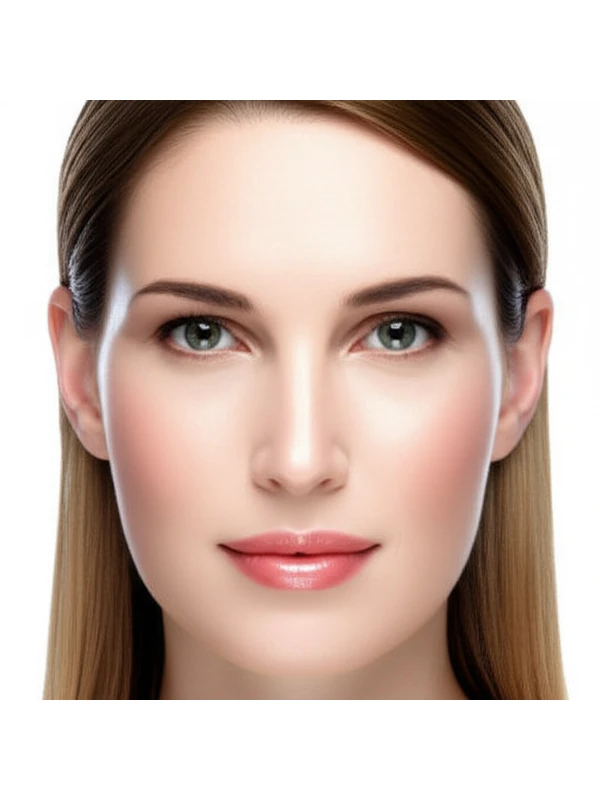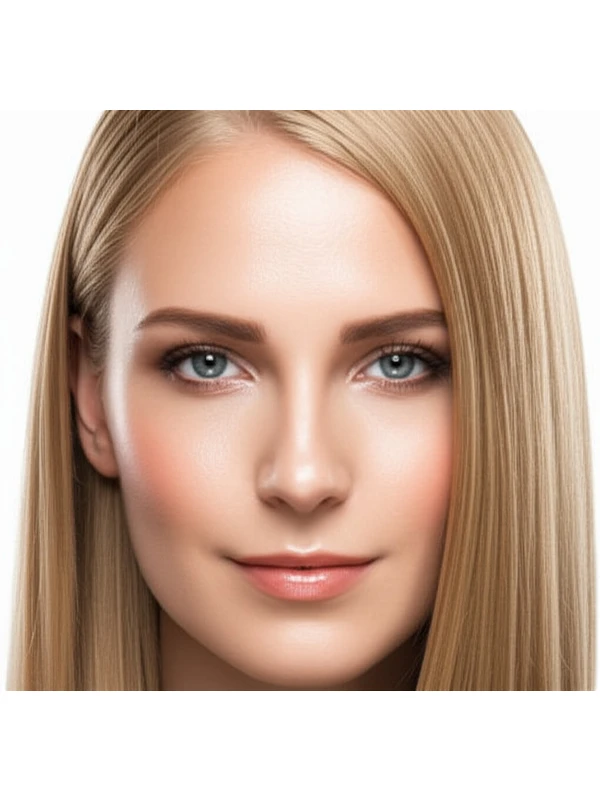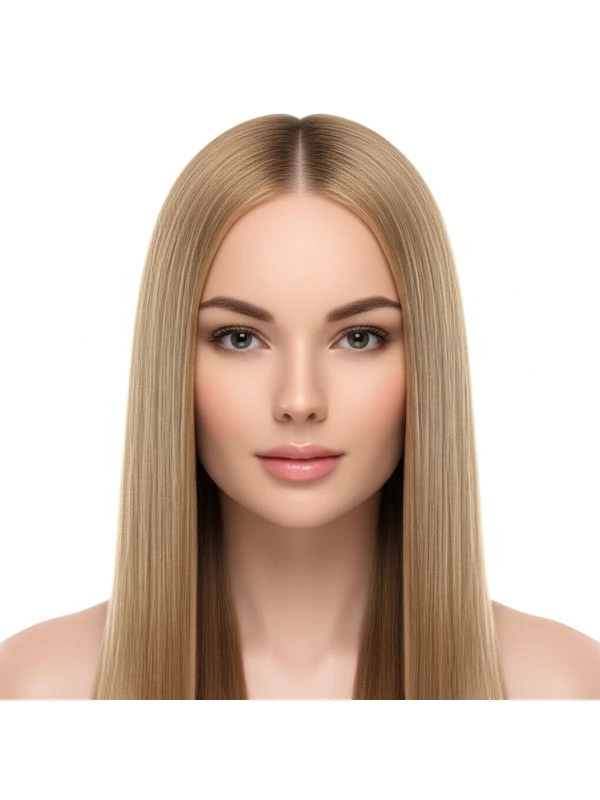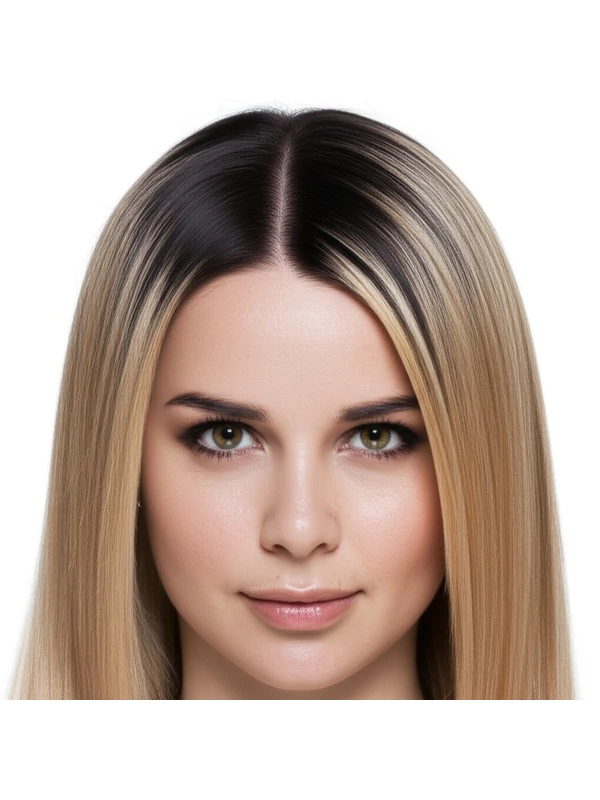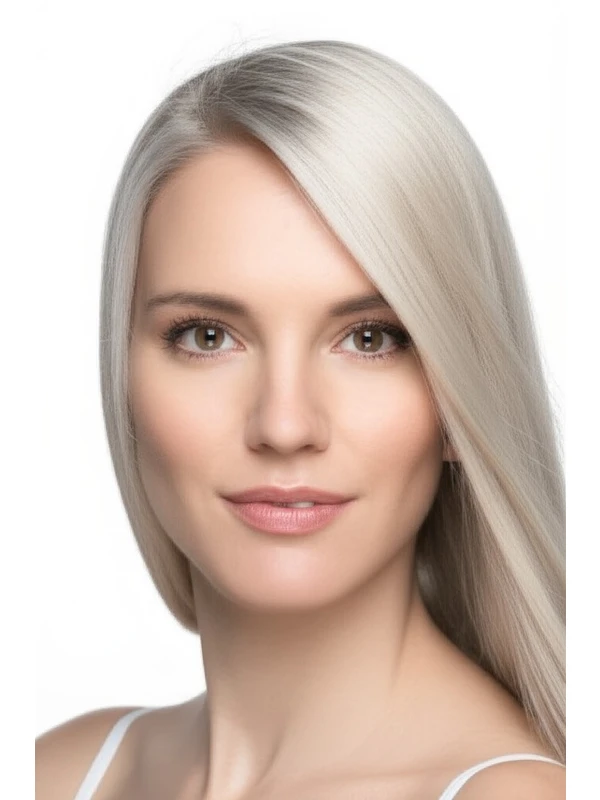#Smudge and Gloss: A Gentle Color Refresh
Smudge and gloss is a popular hair coloring technique gaining traction for its soft, blended results. It's not about dramatic change; it’s about enhancing your natural color with subtle dimension and shine. Let's dive into everything you need to know!
#1. What is Smudge & Gloss? How Does it Work?
Smudge and gloss combines two processes: a "smudge" at the roots, followed by an all-over “gloss.” The smudge softens any harsh lines from previous highlights or color changes. It creates a gradual transition between your natural root color and lighter lengths. The gloss adds shine and evenness throughout your hair.
Tools & Products:
- Color/Gloss Product: Your stylist will choose a shade based on your desired outcome (more on that later).
- Applicator Brush or Sponge: For precise application of the smudge color.
- Gloves: To protect skin from staining.
- Processing Cap (Optional): Helps retain heat and process evenly.
The Process – Step by Step:
- Smudging: Color is applied to the root area, specifically focusing on any visible lines or demarcation between your natural roots and previously colored hair. The stylist will “smudge” this color upwards, blending it into the lighter sections above.
- Glossing: A gloss (which can be a tinted glaze) is then applied all over the hair to add shine, even out tone, and blend everything seamlessly. This step ensures consistent color from root to tip.
- Timing: The smudge typically processes for 10-20 minutes depending on product instructions & desired lift. The gloss usually takes around 5-15 minutes.
#2. Best Use Cases: What Does Smudge and Gloss Achieve?
Smudge and gloss is incredibly versatile! Here's what it can accomplish:
- Root Blurring: The primary goal – softening or eliminating harsh root lines from previous color applications.
- Dimension & Softness: Adds subtle highlights and shadows, creating a more natural, multi-dimensional look.
- Face Framing: The stylist can strategically apply the smudge to brighten and soften facial features.
- Low Coverage/Toning: Can subtly adjust undertones (warm or cool) without significant color change. It's not meant for covering gray entirely but can minimize its appearance.
- Enhancing Natural Color: Simply makes your existing hair color richer, shinier, and more vibrant.
#3. Who Suits Smudge & Gloss?
This technique is surprisingly adaptable! However, some factors make it particularly well-suited:
- Natural Color Level: Best for those with level 7 (light brown) or lighter hair. It works on darker hair but the effect will be more subtle.
- Undertone: Can work with both warm (golden, copper) and cool (ashy, silver) undertones. Your stylist can select a color to enhance your natural tones.
- Hair Type/Texture: Works well across all textures – straight, wavy, curly, coily! The gloss adds shine regardless of curl pattern. Density isn't as crucial but thicker hair may require more product and processing time. Length: Suitable for all lengths, short to long.
- Lifestyle: Ideal for those who want a low-maintenance color refresh that doesn’t demand frequent salon visits.
#4. Smudge & Gloss vs. Similar Techniques
Understanding the differences helps you communicate your goals with your stylist:
- Balayage vs. Foilyage vs. Highlights: Balayage and foilyage are more involved highlighting techniques involving hand-painted or foil placement for greater lift. Smudge and gloss follows these techniques to soften lines, not create the highlights themselves.
- Root Smudge vs. Shadow Root: A root smudge is a broader application that blends into lighter lengths, while a shadow root focuses solely on creating a darker, blended root line – less about overall color richness. Smudge and gloss includes a root smudge but also adds an all-over gloss for shine.
#5. Maintenance & Longevity: Planning Ahead
- Salon Timing: Typically every 6-12 weeks, depending on how quickly your roots grow out and the desired level of color maintenance.
- Toner/Gloss Refresh: The gloss component fades over time. A toner refresh (a quick glaze) might be needed sooner than a full smudge & gloss to maintain shine and tone.
- Grow-Out Behavior: The blended nature of this technique means the grow-out is very soft and natural, without harsh lines.
- Budget/Time Planning: Less expensive and time-consuming compared to full highlighting or balayage. Expect 1 – 2 hours in salon.
#6. At-Home Care Tips for Smudge & Glossed Hair
Protect your investment!
- Wash Cadence: Wash hair less frequently (2-3 times per week) to prolong color vibrancy and shine.
- Heat Protection: Always use a heat protectant spray before using any hot styling tools (blow dryers, straighteners, curling irons).
- Color-Safe Care: Use shampoos and conditioners specifically formulated for colored hair – these are gentler and help preserve pigment. Look for sulfate-free options.
- Deep Conditioning: Incorporate a deep conditioning mask into your routine once or twice per month to hydrate and strengthen hair.
#7. Pros & Cons of Smudge & Gloss
Pros:
- Low maintenance
- Soft, natural results
- Adds shine and dimension
- Blends root lines effectively
- Relatively quick and affordable
- Works on various hair types/textures
Cons:
- Limited color change capabilities - best for enhancements.
- Not ideal for covering significant gray (though it can minimize appearance).
- May not lift very dark levels significantly without prior lightening.
#8. Salon Consultation Script: Questions to Ask Your Stylist
Prepare for your appointment! Here are some questions and prompts to guide the conversation:
- "I'm interested in a smudge and gloss technique. Can you explain how it would work with my current hair color?"
- “What level of lift can I expect?”
- "I have [warm/cool] undertones – what shade would best complement them?"
- “How will this affect the overall shine of my hair?”
- "Can you show me some examples of smudge and gloss results on hair similar to mine?"
- "What's the recommended maintenance schedule for this technique?"
- "What at-home products do you recommend to protect my color?"
#9. Frequently Asked Questions
- Will smudge and gloss damage my hair? When done correctly by a skilled stylist, it’s gentle! The gloss can add moisture but always discuss your hair's health with your stylist beforehand.
- Can I do this at home? While technically possible, achieving the blended results requires precision and expertise. It's best left to professionals.
- How long does a smudge and gloss take? Approximately 1-2 hours in salon.
- Is it permanent? No, it’s a semi or demi-permanent color application that washes out gradually over time.
- Can I get smudge & gloss if my hair is already heavily colored/highlighted? Yes! It's often used to refresh and blend previously colored hair.
- What if I want more lift than a smudge can provide? Discuss pre-lightening options with your stylist before the appointment.
- Will it cover my gray hair completely? Not typically, but it can soften its appearance significantly. A demi-permanent color may be needed for better coverage.
- Can I change the tone of my hair with a smudge and gloss? Absolutely! Glosses come in various tones (ashy, golden, red) to adjust your hair’s overall hue.
#Smudge & Gloss: Effortless Color with a Soft Edge
Smudge and gloss is a trending hair color technique that gives your hair a lived-in, effortless look. It’s essentially a soft balayage or highlights blended seamlessly with a glossy glaze all over. Think subtle dimension meets healthy shine – it's about enhancing your natural beauty rather than masking it. This style works beautifully for those wanting to add depth and movement without the commitment of traditional highlighting.
#Face Shape & Proportions: Finding Your Ideal Smudge
The placement of the smudging is key to flattering your face shape and overall proportions. Here’s a quick guide, but remember, these are starting points – your stylist can tailor it!
- Oval Faces: You're lucky! Most smudge placements will look great. Consider focusing highlights around the crown for extra lift.
- Round Faces: Softly placed smudges underneath the cheekbones and around the temples can create an illusion of length and definition. Avoid concentrated color at the center of your face.
- Square Faces: Soften angles with strategically placed smudging along the jawline and forehead, avoiding harsh lines. A slightly warmer tone often complements square faces well.
- Heart-Shaped Faces: Smudges around the chin area can balance a wider forehead. Consider lighter tones towards your hairline to draw attention upwards.
- Long Faces: Horizontal smudging across the midsection of the hair (at eye level) creates visual width. Avoid vertical placement, which will elongate the face further.
Body Proportions & Height Considerations: If you're taller and have longer limbs, a more dramatic smudge can balance your proportions. Shorter individuals might prefer a softer, more blended effect to avoid looking overwhelmed by color.
#Texture & Density Mapping for Smudge Success
Your hair’s texture and density significantly impact how the smudge looks and how it should be applied:
- Fine Hair: Subtle smudging is best. Too much product or contrast can make fine hair look flat and stringy. A lighter glaze will add shine without weighing down strands.
- Medium Hair: You have a lot of flexibility! Experiment with slightly bolder smudge placements, but still prioritize seamless blending.
- Thick Hair: Smudging can really break up density and create movement. Consider multiple smudges or more impactful placement to avoid looking bulky.
- Straight Hair: The color will show clearly, so precise application is important for a clean finish. A gloss adds incredible shine!
- Wavy/Curly Hair: Smudge placement should consider the natural curl pattern. Highlights often look best concentrated where curls are looser or straighter to avoid banding.
- Coily Hair: Smudging can add dimension and definition to coils. Consider a richer, warmer tone that complements your skin tone and enhances natural shine. A hydrating gloss is essential for moisture retention.
#Maintenance Cadence: Keeping Your Smudge Glowing
The frequency of touch-ups depends on how much you want to maintain the color contrast and brightness.
- Root Shadow: If you prefer a more grown-out look, touch up roots every 8–12 weeks.
- Gloss Refresh: A gloss should be applied every 6–8 weeks to maintain shine and vibrancy. This also helps blend any new growth.
- Overall Color Intensity: For maximum color longevity (and less frequent salon visits), opt for a slightly darker base smudge, which will take longer to show regrowth.
#Grow-Out Roadmap: Embracing the Evolution
Smudge & Gloss is designed to grow out gracefully! Here's how it unfolds:
- Weeks 1–4: The color looks fresh and vibrant.
- Months 2–3: New growth becomes visible, but blends relatively well with the smudge.
- Months 4–6: The contrast between new growth and smudged sections is more noticeable. A gloss helps blend it all together.
- Beyond 6 Months: The look evolves into a softer, more natural effect. You can either refresh the color or embrace the gradual fade for an even more lived-in feel.
#FAQs: Your Smudge & Gloss Questions Answered
- Can I do this at home? While glosses are possible to apply yourself, achieving the smudging technique requires a skilled stylist's expertise in placement and blending.
- Is smudge & gloss damaging? Like any color service, it involves processing. However, with proper care (hydrating products, heat protection), damage can be minimized. Discuss your hair’s health with your stylist beforehand.
- What if I have dark hair? Smudge and gloss works beautifully on darker hair! The effect will be more subtle and dimensional rather than a drastic color change. Copper or bronze tones often look stunning.
- Can smudge & gloss cover gray hair? It can blend gray hairs, but it won't completely conceal them. A demi-permanent glaze is usually used for better coverage while maintaining naturalness.
- What’s the difference between a smudge and balayage? Balayage is a freehand painting technique that creates highlights; a smudge blends those existing highlights (or strategically placed color) with a gloss to create soft, diffused dimension.
- I have previously colored hair - can I still get this done? It depends! Your stylist will need to assess the condition of your hair and any previous colors used. Multiple sessions might be needed if you're starting from a very dark base or have significant color build-up.
- What tones are trending right now for smudge & gloss? Warm, earthy tones like caramel, honey, copper, and bronze are incredibly popular. Cooler shades like ash brown and beige blonde also work well depending on your skin tone and preference.
